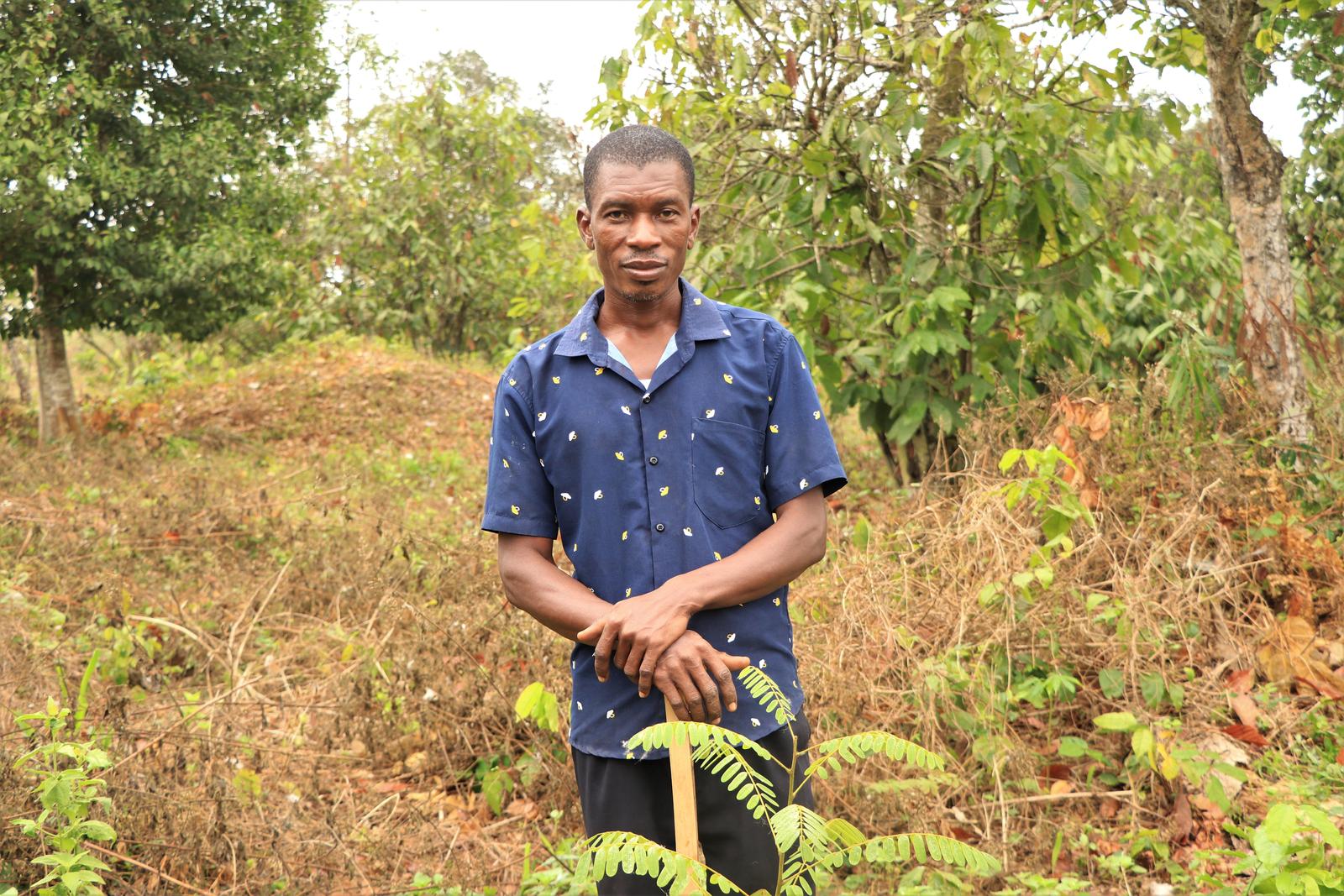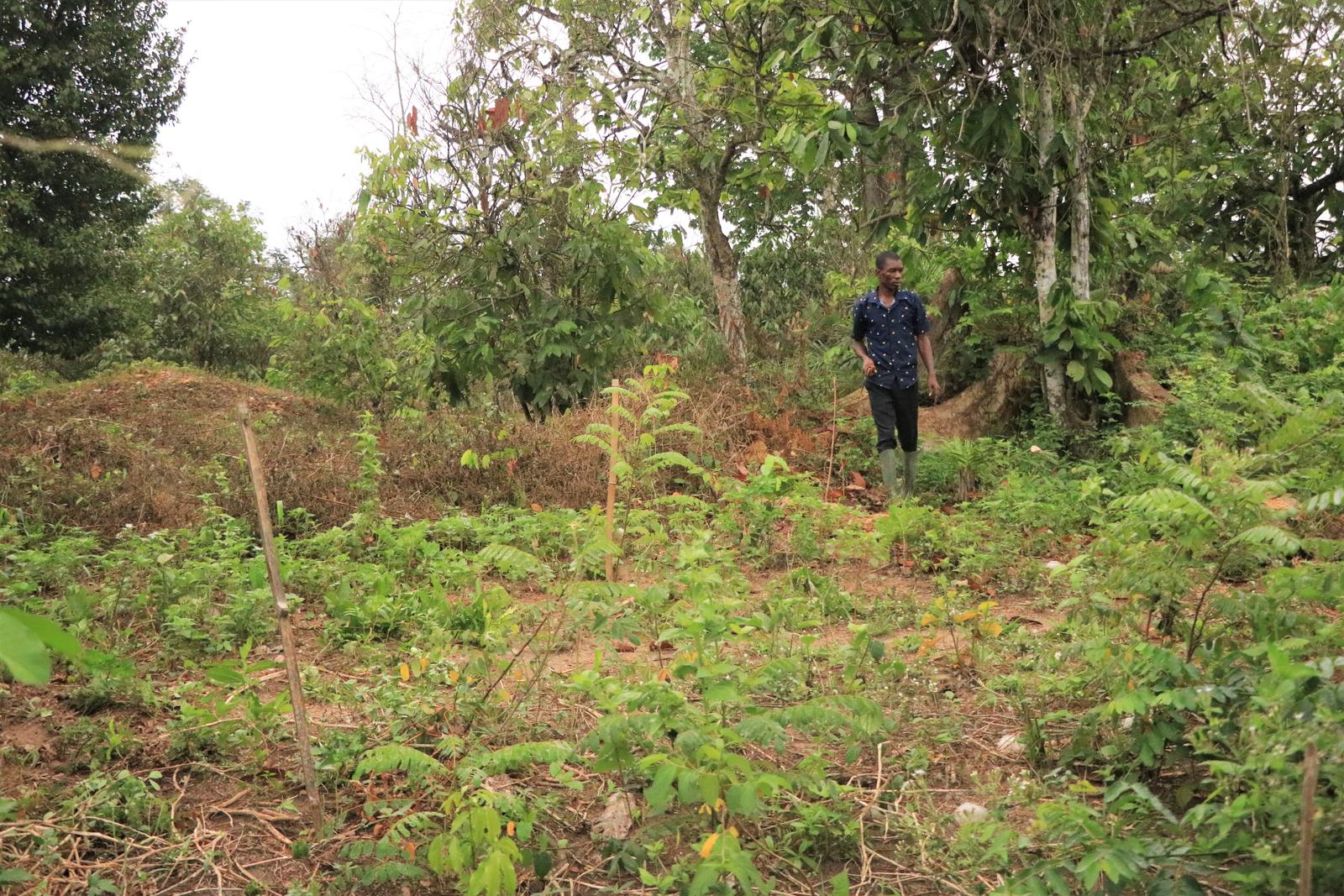Reaping the benefits of agroforestry today & for the future
Loss of tropical rainforests is a major issue in Côte d’Ivoire and Ghana, which together produce nearly two-thirds of the world’s supply of cocoa. Touton has just published its second Ghana progress report for the Cocoa & Forests Initiative, a public private partnership that coordinates efforts towards building a more sustainable and climate resilient cocoa supply chain.
Day in day out, we build sustainability programs in a way that cocoa farming and sourcing not only protect and restore forests, but also promote sustainable cocoa production and farmers’ livelihoods. One of the major objectives is to “grow more cocoa on less land” which means applying effective landscape management approaches. Sustainability programs are tailored to local needs and include engaging with cocoa farmers and communities to improve planting materials, to provide training in good agricultural and agroforestry practices, boosting the land tenure reform, or supporting income diversification.

The best way to picture what these efforts mean on the ground is to look at what farming partners have to say about it, such as Christopher Bonsu Amoako, from Sewfi Yawmatwa, in the West North of Ghana, a very engaged actor for change in his community:
I heard about cocoa rehabilitation and landscape management for the first time in 2016, when CFI partners came to sensitize our cocoa community. Their presentation really clarified the impact of climate change on our cocoa production and how the forest plays a key role in protecting us and our plantations.
Firstly, I have significantly developed my network in the Ghanaian forest and cocoa supply chain, meeting and working with several organizations. Secondly, I have progressed in knowledge and skills to improve my own cocoa farming, including: Good Agronomic Practices, General Planning, Financial Literacy and Savings.
 I am convinced that good landscape management and agroforestry practices are important to protect our forest and improve our wellbeing. The shade trees I planted just a year ago are doing very well. I foresee that in 5 to 6 years’ time, we will see great performance in the plantation, and more forest to curb the negative effects of changing raining patterns. I can compare the positive effects of shade trees and humid ecosystems on my yield every day. My cocoa plot located near the forest is healthy and rendering well. On the contrary, the plot that is far away from the forest is performing poorly, so I decided to plant shade trees on it.
I am convinced that good landscape management and agroforestry practices are important to protect our forest and improve our wellbeing. The shade trees I planted just a year ago are doing very well. I foresee that in 5 to 6 years’ time, we will see great performance in the plantation, and more forest to curb the negative effects of changing raining patterns. I can compare the positive effects of shade trees and humid ecosystems on my yield every day. My cocoa plot located near the forest is healthy and rendering well. On the contrary, the plot that is far away from the forest is performing poorly, so I decided to plant shade trees on it.
It is not always easy though; the main implementation challenge I face is to motivate the whole community to work together. When I pushed for setting up shade tree nurseries, the chiefs offered land but the logistics to coordinate the work of a big group, and the lack of material to work efficiently, made it more difficult.